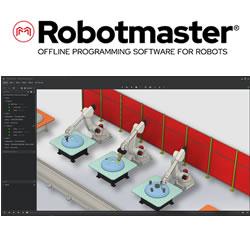Manufacturing companies are turning to AMR support in increasing numbers, not just on a small scale, but the interest in entire AMR fleets is gaining significant traction.
 AMRs in Fleet Operation and Test Deployment
AMRs in Fleet Operation and Test Deployment

Article from | SCIO Automation
Entire fleets of Autonomous Mobile Robots (AMRs) linking warehouses, production and entire sites in direct collaboration with other pedestrian and vehicle traffic. Manufacturing companies are turning to AMR support in increasing numbers, not just on a small scale, but the interest in entire AMR fleets is gaining significant traction. There are many reasons for this: increased efficiency and productivity, improved safety, scalability and flexibility, and reduced labor costs. In addition, there’s a shortage of blue-collar logistics workers everywhere, and companies now seem to have full confidence in AMR technologies after several years of testing.
But where does this positive attitude towards AMR technology come from? We’ve already talked about the current challenges facing R&D when it comes to taking the next big step in mobile robotics. What functionalities and technologies are driving confidence in AMRs today for fleet use and as smart factory networking systems?
As far as SCIO is concerned, it’s twofold, the AMR itself, and the control technology. The latter orchestrates the entire fleet in the Smart Factory and manages data interfaces in line with the environment.
In this regard, SCIO's 4am Robotics brand relies on standard floor vehicles, for which it has developed a universal automation kit. Advanced navigation and mapping systems are used here, enabling lightning quick integration and simple adaptations. The sensors and perception systems used ensure safe operation and flexibility when it comes to collaborations between humans and robots. "This is a big plus for our customers, as they can use our AMRs for other tasks and don't have to buy another new standalone system," said Johannes Ritt, technical sales at 4am Robotics.
At 4am Robotics, one control system manages the entire fleet itself. Decentralized control systems are used for more elaborate applications with highly complex logics. Traffic flows, routes and intersections are organized, and orders are assigned to the respective AMRs. Each AMR can communicate directly with network participants to obtain necessary releases or information. This enables a fast and smooth integration.
This sounds great in theory. But how does it look in practice given the fact that external influences are beyond machine control - whether that’s humans or weather?
Ever thought about an Autonomous Mobile Robot that can not only drive inside production buildings but outdoors as well, connecting entire production sites? How about an AMR that defies all weathers and navigates its way through fog, rain, and snow? 4am Robotics proves that this isn’t just a pipe dream with its autonomous outdoor tugger train (ATo-H for short). But how do you win a customer over with it? 4am Robotics conducted a one-week test at a chemical company’s site in Germany to find out.
The content & opinions in this article are the author’s and do not necessarily represent the views of RoboticsTomorrow
Comments (0)
This post does not have any comments. Be the first to leave a comment below.
Featured Product

